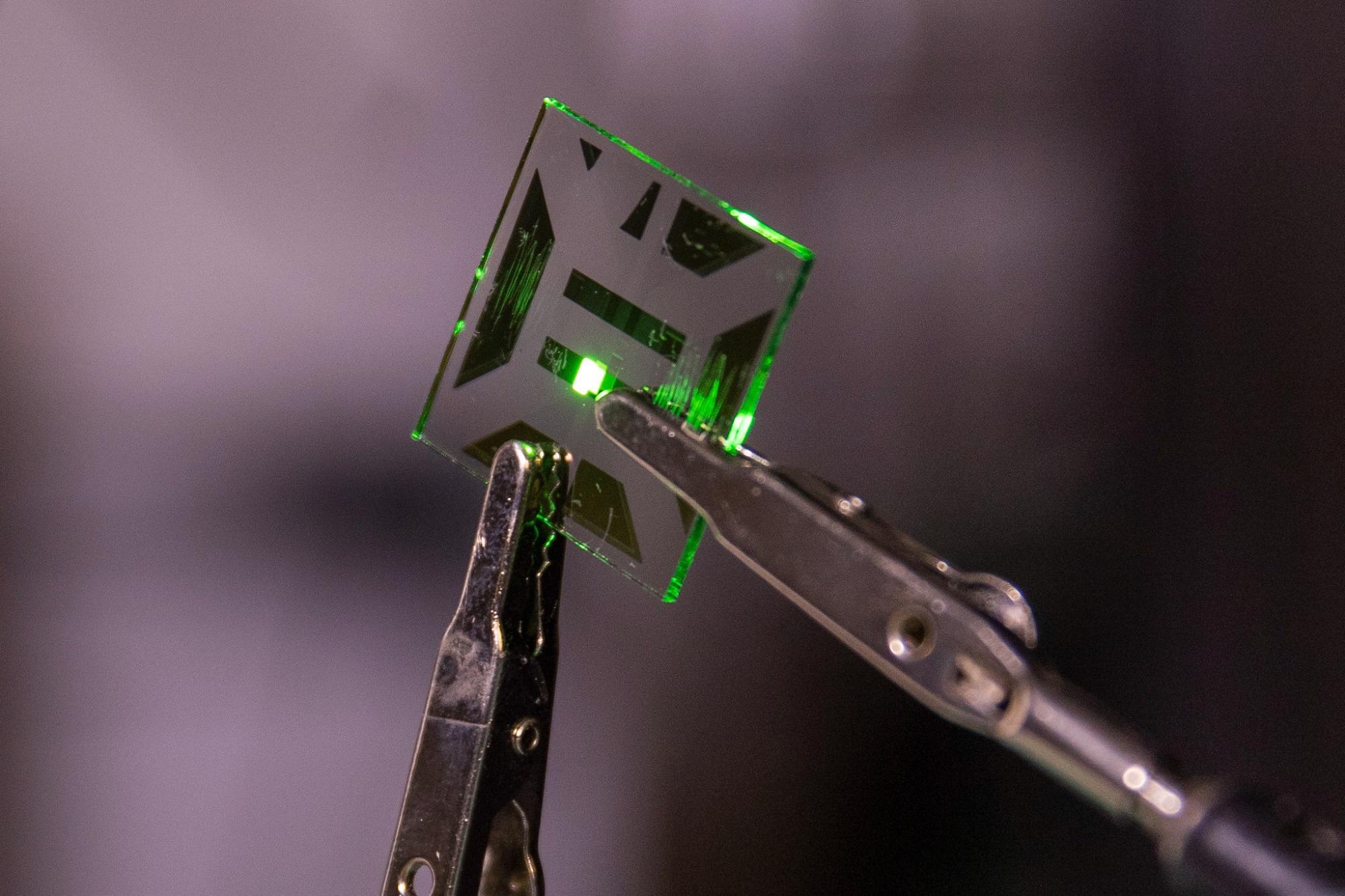Jun 28 2021
The University of Michigan has created a novel electrode that could allow organic light-emitting diodes to produce 20% more light. It might help lengthen the battery life of smartphones and laptops, as well as improve the energy efficiency of next-generation televisions and displays.

Image Credit: University of Michigan.
The method avoids light from getting caught in an OLED’s light-emitting portion, allowing the device to keep its brightness while using less power. Furthermore, the electrode is simple to integrate into existing OLED display and lighting manufacturing processes.
With our approach, you can do it all in the same vacuum chamber.
L. Jay Guo, Study Corresponding Author and Professor, Electrical and Computer Engineering, University of Michigan
About 80% of the light produced by an OLED is trapped inside the device unless developers take action. This is related to a phenomenon known as waveguiding. Light rays that do not emerge from the device at a nearly perpendicular angle are reflected and steered sideways through the device. They become lost inside the OLED and are never found.
Much of the light that is lost is merely caught between the two electrodes on either side of the light emitter. The transparent electrode, which normally comprises indium tin oxide and sits between the light-emitting material and the glass, is one of the worst offenders (ITO). Trapped light can be seen shooting out the sides of a lab gadget rather than going through to the viewer.
Untreated, it is the strongest waveguiding layer in the OLED. We want to address the root cause of the problem.
L. Jay Guo, Study Corresponding Author and Professor, Electrical and Computer Engineering, University of Michigan
Guo’s team kept the electrode function while completely eliminating the waveguiding problem in the OLED layers by replacing the ITO with a 5-nm-thick layer of silver put on a seed layer of copper.
Industry may be able to liberate more than 40% of the light, in part by trading the conventional indium tin oxide electrodes for our nanoscale layer of transparent silver.
Changyeong Jeong, Study First Author and PhD Candidate, Electrical and Computer Engineering, University of Michigan
However, in a relatively modest lab gadget, this gain is difficult to notice. Even though the light is no longer directed in the OLED stack, it can still be reflected from the glass. Engineers in the industry have devised methods for decreasing reflection, such as adding bumps to the glass surface or adding grid patterns or particles to spread light throughout the glass.
“Some researchers were able to free up about 34% of the light by using unconventional materials with special emission directions or patterning structures,” said Jeong.
Guo’s team had to cease the light trapping by the glass to establish that they had abolished the waveguiding in the light-emitter. They did it with an experimental set-up that used a liquid with the same index of refraction as glass, known as index-matching fluid — in this case, oil.
The reflection that occurs at the boundary between high-index glass and low-index air is prevented by this “index-matching.”
They could then look at their experimental set-up from the side to see if any light was coming in from the side. They discovered that the light-emitting layer’s edge was almost completely dark. As a result, the light passing through the window was around 20% brighter.
Journal Reference:
Jeong, C., et al. (2021) Tackling light trapping in organic light-emitting diodes by complete elimination of waveguide modes. Science Advances. doi.org/10.1126/sciadv.abg0355.